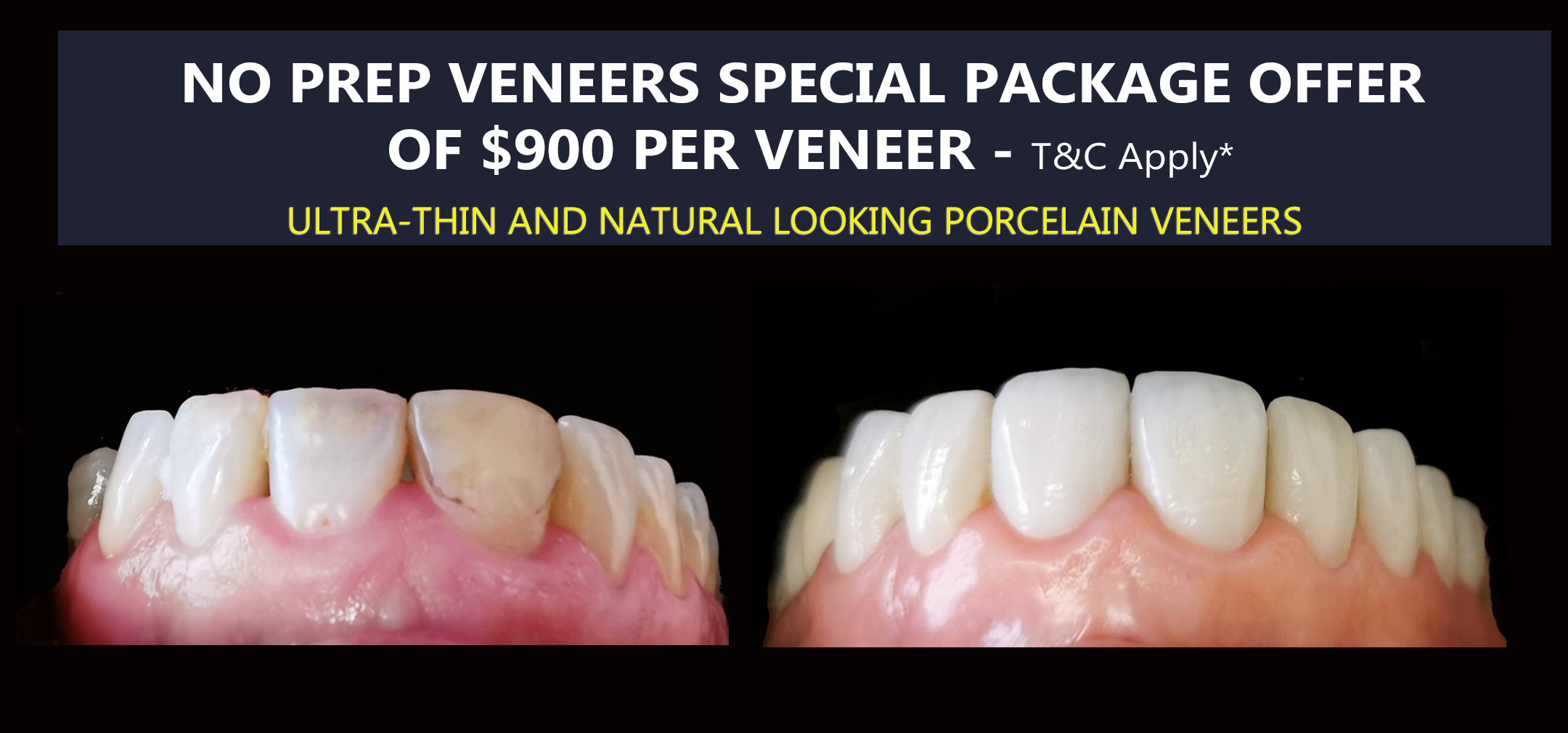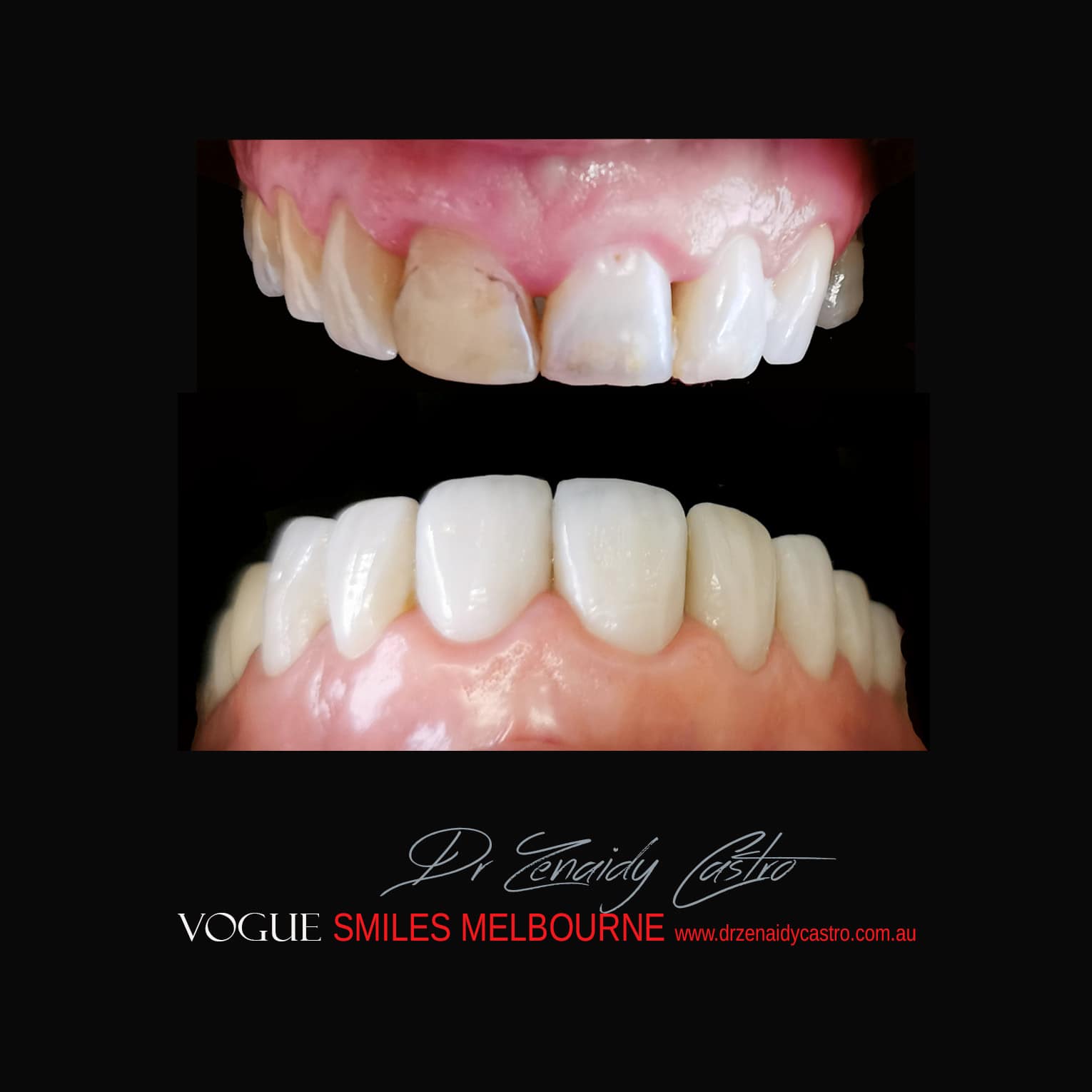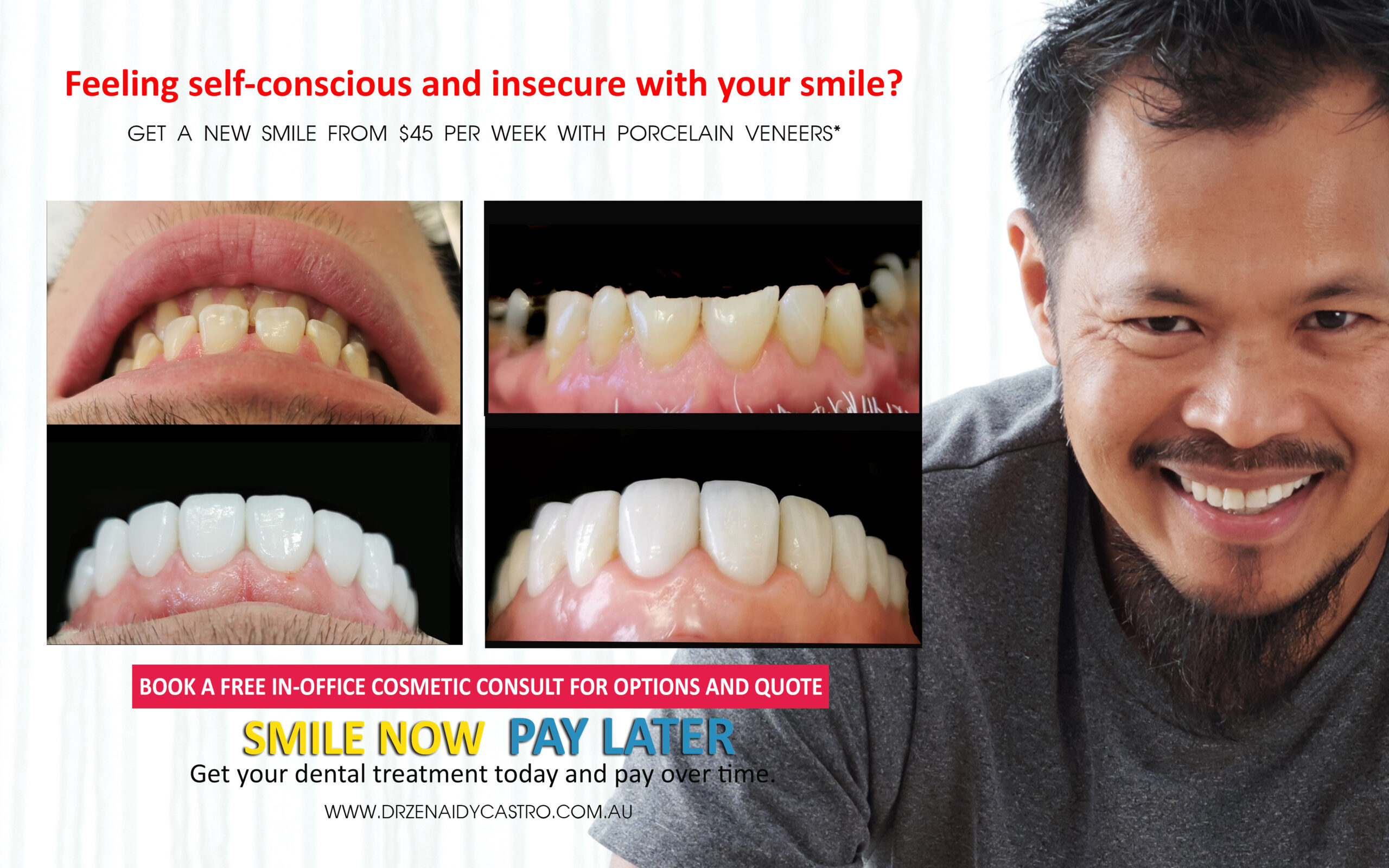

✨ Porcelain veneers last 10 to 15 years or more with proper care
✨ Composite veneers typically last 5 to 7 years and may need more frequent replacement
✨ Porcelain veneers resist staining and maintain color over time
✨ Dental bonding (composite) is quicker, cheaper, but less durable than porcelain
✨ Porcelain veneers require minimal discomfort with local anesthesia
✨ Composite veneers cause little to no discomfort during treatment
✨ Porcelain veneers offer superior natural look, translucency, and strength
✨ Composite veneers are an additive, reversible treatment but prone to staining
✨ Vogue Smiles offers a special package: $900 per tooth (minimum 10 teeth) for no grinding or Prepless veneers
Choosing Dental Veneers: Composite or Porcelain?
If you’re considering enhancing your smile or correcting dental imperfections, choosing dental veneers is often a smart and transformative step. Whether you want to fix chipped, discolored, uneven, or slightly misaligned teeth, dental veneers provide a cosmetic solution that’s both effective and long-lasting. But when it comes to selecting the right type of veneer, most patients are faced with an important decision: Composite Veneers or Porcelain Veneers?
Both options can deliver stunning results, but they differ significantly in materials, cost, durability, aesthetics, and the treatment process. If you’re located in Melbourne or Noble Park North, understanding the pros and cons of each can help you make a confident, informed choice — one that best suits your lifestyle, budget, and long-term goals.
Composite Veneers
Composite veneers are made from a tooth-colored resin that is applied directly to the teeth and sculpted during your visit. They are often chosen for their affordability and same-day treatment convenience.
✅ Benefits of Composite Veneers:
- More affordable than porcelain veneers
- Can often be applied in a single visit
- Easier to repair if chipped or damaged
- Minimal to no enamel removal needed
However, composite veneers are slightly less durable and stain-resistant compared to porcelain, and may require more frequent replacement (typically every 4–7 years).
Porcelain Veneers
Porcelain veneers, on the other hand, are crafted in a dental laboratory and bonded to your teeth over two visits. They are highly valued for their natural translucency, resistance to stains, and long-term durability.
✅ Advantages of Porcelain Veneers:
- Superior aesthetic results with a natural look
- Highly resistant to staining and discoloration
- Stronger and more durable (can last 10–15 years or longer)
- Customized to match your ideal tooth shape and color
While porcelain veneers typically involve a higher upfront cost and a longer procedure time, they are often considered the premium choice for long-lasting smile makeovers.
Making the Right Choice in Melbourne & Noble Park North
At Vogue Smiles Melbourne, we specialize in both composite and porcelain veneers in Melbourne & Noble Park North. During your consultation, we take into account your oral health, aesthetic goals, budget, and lifestyle to help you choose the ideal solution.
Whether you’re leaning toward the convenience of composite veneers or the luxurious durability of porcelain veneers, we’ll help guide you every step of the way. Your perfect smile is within reach — and it starts with choosing the right dental veneers for you.
???? Book your FREE Veneers Consultation today with Dr. Zenaidy Castro to explore your options and get a personalized treatment plan tailored to your needs.
 Review the important terms and conditions that apply to this offer.
Review the important terms and conditions that apply to this offer.

Composite Veneers or Dental Bonding: Which Option is Right for You?
If you’re looking to enhance your smile quickly and affordably, Composite Veneers or Dental Bonding may be the ideal solution. These treatments offer an accessible cosmetic option for individuals looking to correct minor imperfections such as chipped, uneven, or discoloured teeth — without the need for invasive procedures.
What is Composite Bonding (Direct Veneers)?
Composite bonding, also referred to as “direct veneers” or sometimes “plastic veneers,” involves the application of a tooth-coloured composite resin material directly onto the tooth. This resin is then shaped, cured (hardened), and polished to match your natural tooth structure and desired aesthetic.
Bonding is typically completed in just one dental visit, making it a time-efficient solution for patients seeking instant cosmetic improvement. It’s often used for:
- Repairing chipped or cracked teeth
- Closing small gaps between teeth
- Improving tooth shape or length
- Covering minor stains or discolouration
- Because it involves minimal to no enamel removal, bonding is usually painless and requires no anaesthesia.
What Are Composite Veneers?
Composite veneers work similarly to bonding but are used more broadly for aesthetic enhancements across multiple teeth. In this treatment, the resin material is applied in layers and sculpted directly in the mouth to refine shape, symmetry, and shade.
Unlike porcelain veneers, composite veneers do not require laboratory fabrication, which makes them a more affordable and reversible option. In the right hands, beautiful, natural aesthetics can be achieved, making them a popular choice for patients who want an immediate smile upgrade.
Advantages of Composite Veneers or Bonding:
✅ Non-invasive and usually reversible
✅ Completed in one visit
✅ No or minimal tooth reduction
✅ More affordable upfront than porcelain veneers
✅ Ideal for minor cosmetic enhancements
When performed by a skilled aesthetic dentist, composite veneers can deliver results so seamless that most people won’t even know you’ve had dental work done.
Limitations and Considerations:
- While composite veneers or bonding are excellent short- to medium-term solutions, they do have their drawbacks:
- Durability: Composite resin is not as strong or long-lasting as porcelain. These veneers generally last between 4 to 7 years, whereas porcelain can last 10–15 years or more.
- Staining: Composite materials are more prone to staining over time, especially with exposure to coffee, wine, and smoking.
- Aesthetic Limitations: Porcelain veneers offer a more natural, translucent, tooth-like finish, making them the preferred option for more visible smile transformations.
Conclusion: Which Should You Choose?
If you’re looking for a quick, affordable, and minimally invasive option to improve your smile, composite veneers or dental bonding may be the right choice — especially for minor cosmetic fixes. However, if you’re aiming for long-term durability, superior aesthetics, and stain resistance, porcelain veneers may offer better value over time.
At Vogue Smiles Melbourne and Noble Park North, Dr. Zenaidy Castro offers expert consultation to help you decide the best cosmetic treatment based on your goals, budget, and dental condition.
???? Book your personalized consultation today and take the first step toward your perfect smile!

What are Porcelain Veneers?
Porcelain veneers are the most popular choice among dental veneers due to their superior strength, durability, and natural appearance. Unlike composite veneers, porcelain veneers are custom-crafted in a dental laboratory, allowing for exceptional colour matching, lifelike translucency, and an overall more realistic look.
One of the key advantages of porcelain veneers is their long-lasting nature. They are highly resistant to staining and discoloration, making them ideal for patients seeking a durable, bright, and beautiful smile over many years. Their strength also provides enhanced protection for the underlying tooth compared to composite alternatives.
While porcelain veneers typically require fewer dental visits, the involvement of lab fabrication and the advanced materials used generally make them more expensive than composite veneers. The added cost reflects their premium quality and longevity, making porcelain veneers a worthwhile investment for many patients prioritizing aesthetic excellence and durability.
Key Differences Between Composite and Porcelain Veneers
Material
- Composite veneers are made from a synthetic resin similar to plastic. They tend to dull, discolor, and wear down over time due to their less durable nature.
- Porcelain veneers are crafted from a natural, glass-like ceramic material that offers superior strength, lasting colour, and a lustrous finish.
Aesthetics
- Porcelain veneers closely mimic natural tooth enamel. Dr. Castro’s ceramist uses expert handcrafted layering techniques in the lab, producing veneers that are symmetrical, consistent, and richly hued with a natural translucency.
- Composite veneers are applied directly to the teeth as a liquid resin, then sculpted and polished by the dentist. Achieving excellent aesthetic results with composites requires significant skill, and even then, the appearance may degrade faster and lack the precise natural look of porcelain.
Optical Difference
One of the most striking differences between composite and porcelain veneers lies in their optical properties. Porcelain veneers possess natural translucency that allows them to reflect and refract light much like real tooth enamel. This translucency gives porcelain veneers a life-like depth and brightness, creating a radiant, natural-looking smile that’s difficult to distinguish from genuine teeth.
- In comparison, composite resin veneers, while visually appealing, cannot fully replicate this optical effect. Composite materials tend to have a more opaque finish and may not reflect light as naturally as porcelain, which can result in a less vibrant appearance over time.
- Another significant advantage of porcelain veneers is their resistance to staining. Thanks to their dense, non-porous surface, porcelain veneers maintain their bright, white appearance longer than composite veneers, which are more prone to discoloration from everyday foods, drinks, and habits like smoking.
- Overall, the superior optical qualities and stain resistance of porcelain veneers make them the preferred choice for those seeking a highly aesthetic, long-lasting smile transformation.

Feel
- Porcelain veneers are renowned for their strength and durability, which allows them to be crafted ultra-thin without sacrificing their smooth, flawless surface. This thinness combined with porcelain’s natural texture means that most patients report their porcelain veneers feel indistinguishable from their natural teeth. The sensation is smooth, comfortable, and highly natural.
- On the other hand, composite veneers are typically thicker and can feel slightly rougher on the surface. Since composite resin is applied and sculpted directly onto the tooth, it may not achieve the same fine polish and thinness as lab-crafted porcelain veneers. For some patients, this difference in texture and thickness is noticeable.
Treatment Time
- When it comes to treatment duration, composite veneers offer the advantage of convenience, as they can usually be completed in a single dental appointment. This makes them a faster option for patients seeking immediate cosmetic improvements.
- Conversely, porcelain veneers require a more involved process. Because they are custom-made in a dental laboratory, porcelain veneers generally necessitate at least two appointments: one to prepare the teeth and take impressions, and a second to bond the finished veneers in place. Despite this longer initial process, porcelain veneers tend to require significantly fewer maintenance visits over time compared to composite veneers. This can translate to a more cost-effective and durable solution in the long run.

Longevity
When it comes to longevity, porcelain veneers are the superior choice. Durable and resilient, well-crafted porcelain veneers can last for decades with proper care, professional placement, and regular maintenance. Dr. Castro ensures that every porcelain veneer patient receives a bespoke night guard to protect their veneers during sleep, significantly extending their lifespan. In contrast, composite veneers generally have a shorter lifespan and often need replacement every few years due to wear, staining, and chipping.
Treatment Process
- The treatment process for composite veneers—also known as dental bonding—involves minimal tooth reduction. The dentist removes any decayed or damaged parts of the tooth, applies a bonding agent, and then sculpts layers of composite resin directly onto the tooth. A curing light hardens the material, which is then trimmed and polished for a natural look. This procedure can be completed in a single visit and does not usually require anesthesia.
- In contrast, porcelain veneers in Melbourne & Noble Park North involve a more extensive process. The front surface of the tooth must be reduced by about 0.5mm to allow room for the veneer. Impressions are taken and sent to a dental laboratory, where skilled technicians fabricate the veneers using layered porcelain that mimics the translucency and shade variations of natural teeth. The veneers are then bonded to the tooth in a separate appointment. This lab-crafted approach provides superior aesthetics that are difficult to achieve with composite bonding.
Indications
- Both dental veneers and composite bonding address common cosmetic concerns like gaps, chips, and misshapen teeth. Composite bonding is ideal for small gaps or minor chips due to its ease of application and minimal invasiveness. Porcelain veneers, on the other hand, are recommended for larger gaps and more extensive damage because porcelain is significantly stronger and more durable than composite resin.
- Porcelain veneers are also a popular choice to dramatically improve the color, alignment, and shape of the front teeth, offering a transformative smile makeover. However, patients should be mindful that porcelain is more abrasive than natural tooth enamel and may cause wear on opposing natural teeth if not carefully monitored.
- For younger patients, composite bonding is often preferred since it is less invasive and avoids the need for anesthesia. Moreover, because children’s teeth and jawbones are still developing, investing in porcelain veneers prematurely can lead to the need for replacements as they grow. Good oral hygiene habits are also critical for the success of any veneer treatment.
Treatment Limitations
Both composite veneers and porcelain veneers may not be suitable for patients with bite (occlusion) issues such as malalignment or habits like teeth grinding. These conditions place excessive stress on veneers, leading to fractures. Composite veneers tend to wear down more quickly under such conditions, while porcelain veneers, although harder, can be brittle and prone to chipping or cracking when subjected to trauma.

How Long Do They Last?
- One of the major advantages of porcelain veneers is their remarkable resistance to staining. Unlike natural teeth, porcelain does not change color over time, although the surrounding natural teeth might darken. This is why patients are advised to complete any teeth whitening treatments before getting veneers, ensuring the veneer shade matches their brightened smile perfectly.
- On average, dental bonding (composite veneers) lasts between 5 to 7 years, while porcelain veneers can endure 10 to 15 years or longer with proper care. In some cases, porcelain veneers may even last a lifetime if expertly fabricated and maintained with good oral hygiene and regular dental check-ups.
Common Misconceptions
- Many patients worry that getting porcelain veneers will be painful. In reality, the procedure typically involves only minor discomfort, which is easily managed with local anesthesia. Most dentists administer a local anesthetic to ensure patient comfort, and for those who fear needles, a topical anesthetic can numb the area before injection, making the process virtually painless. Dental bonding (composite veneers) generally causes no discomfort at all.
- Another common misconception surrounds the longevity of both options. Some patients are unsure whether dental bonding or porcelain veneers last longer. The truth is that dental bonding usually lasts around 5 to 7 years, while porcelain veneers last significantly longer — 15 years or more with proper maintenance.
- It’s also important to clarify that when dentists say porcelain veneers last 15 years, they do not suddenly fail or fall off after this time. Veneers only need replacement if they fracture, wear out, or if decay develops beneath them, requiring removal and replacement.
Estimated Cost
- Composite veneers are generally more affordable upfront, often costing about one-half to one-third the price of porcelain veneers. This makes composite veneers a popular choice for a quick, less expensive cosmetic improvement.
- However, if you are seeking a lasting investment in your smile, porcelain veneers offer superior value in the long run. Although they have a higher initial cost, their durability and resistance to staining mean fewer maintenance visits and replacements over time.
- While composite veneers can effectively address minor chips, discoloration, or gaps temporarily, porcelain veneers provide a more natural appearance, unmatched longevity, and the best overall results for a permanent smile transformation.
- Composite bonding can cost anywhere from $350 to $700. Obviously, the repair of small damages is cheaper while teeth that require greater coverage will cost more. The price is also dependent on the cosmetic complexity of the case.
- Porcelain veneers, on the other hand, can cost anywhere from $900 to $2,500. One factor for the variation in price is the laboratory where the veneers are made. High-quality labs charge three times as much as an average lab and that is reflected in the price that the dentist charges the patient. These labs usually have good-quality porcelain and a very skilful ceramic artist. The veneer is only going to look as good as the artist who made it. So for a really talented ceramist, dentists usually go for a high-end laboratory.
- For patients in Melbourne & Noble Park North looking to explore their options between composite veneers and porcelain veneers, a consultation with Dr. Castro will help determine the best treatment plan tailored to your needs and goals.


Begin Your Smile Transformation Today
Whether you’re preparing for a milestone event, stepping back into the professional world, or finally ready to smile with pride—there’s no better time to start your transformation. Let Vogue Smiles Melbourne help you reclaim the joy, confidence, and freedom that come with a radiant, worry-free smile.
Your dream smile is closer than you think. Trust your transformation to a dentist with over 3 decades of passion to Cosmetic Dentistry
Book Your Smile Makeover Consultation
???? Call (03) 9629 7664 | 0413 014 122
REQUEST AN ONLINE PERSONALIZED QUOTE ➤
REQUEST FOR A FREE TELECONSULTATION ➤



Disclaimer:
The information on this website is for information purposes only. Is not a substitute for a proper professional care and advice. Each patient’s outcomes, risks, potential complications, and recovery differ. Any dental procedure, minor or major, carries risks, some minor and some serious. Before and after images seen on our Social Media and website pages are our actual patient and have been published/posted with our patients’ permission. All of our patients photos are subject to Copyrights protection. We are strong believers in responsible aesthetics. Every cosmetic, medical, or dental procedure comes with its own set of risks and benefits. Cosmetic Dentistry results will vary from patient to patient. Call our office and book for an actual in-office consultation for us to assess if you are a good candidate for a particular treatment. All of our Specials and packages posted on this site are subject to terms, conditions and availability. The exact fee for a particular cosmetic procedure will be determined after a preliminary assessment distinguishing your unique personal needs and the type of work needed. The prices mentioned on any of our website as well as any mentioned payment plan by a third party source, are just a guide and is subject to change. Call the third party financing providers or visit their website for more info. Please call the office on 9629-7664 for further queries or clarification.




